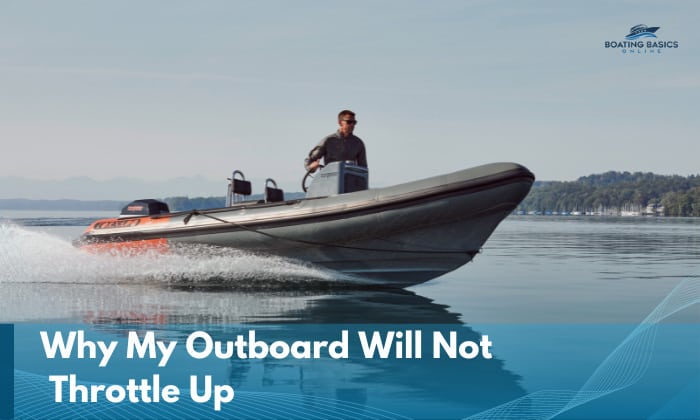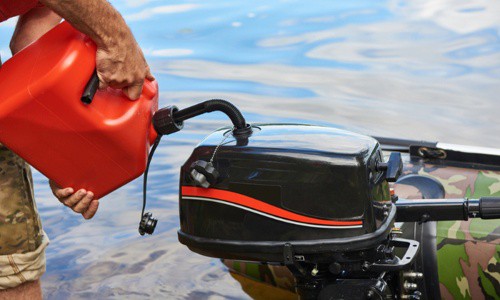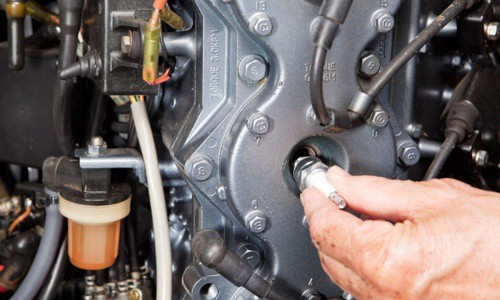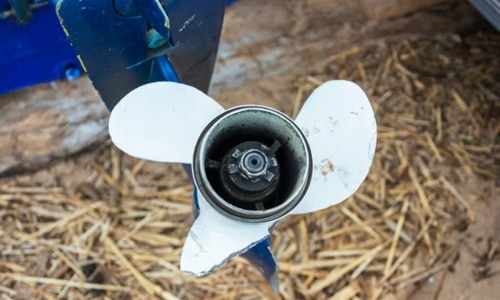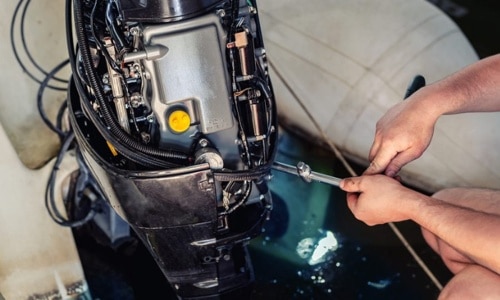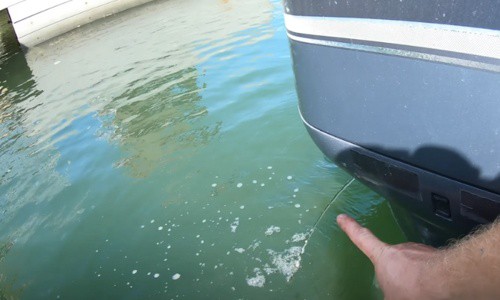I’ve been there before. My boat glides across the waves, but it doesn’t take long for me to feel something’s not quite right. It should be accelerating quickly, but it feels sluggish.
Immediately, I started to look for reasons why my outboard will not throttle up. This article is the product of my comprehensive research.
At best, fuel flow and spark plug issues, lift pump problems, fuel quality, compression issues, prop obstructions or damage, defective parts, and air intake obstructions are likely culprits for your outboard bogs down.
I’ve explained how to troubleshoot each one as follows.
Table of Contents
Common Reasons Why My Outboard Won’t Throttle Up
If your boat motor idles but won’t accelerate, it can be tricky to solve until you know what’s specifically causing it. We’ll start with the most likely suspect for your boat throttle problems: fuel flow woes.
1. Fuel Flow and Fuel Quality Problems
Anything that impedes fuel flow will likely result in your engine starving for fuel and not reaching full RPM. As such, my first recommended step is to inspect the 2-stroke outboard fuel system.
I’ve found that my boat only runs half-throttle if there’s a pinched fuel line, a clog in the lift pump, or, god forbid, I accidentally use bad or old-as-dirt gas.
Here are a few suggestions to tackle the issue:
- Once you’ve identified the kinks, cracks, or obstructions responsible for fuel restriction, you can straighten the fuel line and clear out the blockage. That said, feel free to replace any part (like siphon valves) prone to clogging.
- Siphon all the bad or old fuel out of the engine.
2. Air and Spark Issues
Besides fuel, the spark plug is another essential element an outboard engine requires to function properly. To be specific, this component must be free from corrosion buildup and have the correct gap.
To determine if a defective spark plug is the underlying cause, check for signs of corrosion, salt buildup, and damaged wires. If a defective spark plug is indeed the culprit, try the following measures:
- Ensure that spark plugs are properly positioned and not subject to moisture accumulations that lead to corrosion.
- For wiring problems, the best solution is to replace the entire spark plug.
- Clean the component if there’s just dirt or grime buildup.
3. Propeller Problems
One of the most common reasons a boat runs slow at full throttle is that the prop has caught on to foreign objects like fishing lines and aquatic plants. As a result, it won’t be able to maintain proper grip in the water.
In addition, when your boat motor idles but won’t accelerate, the problem is usually a spun prop, which happens when the connection between the prop and its shaft is compromised, causing the rubber inserts to turn on their own. Thus, at higher RPMs, the friction caused by spinning inserts results in a dip in power and acceleration.
Below are a few suggestions to resolve the issue:
- Visually inspect the prop for entangled objects and any signs of damage they may have caused. Carefully remove anything that has gotten snarled up with it.
- Be mindful of your propeller’s pitch, and make sure it suits your needs. Adjust it based on manufacturer recommendations or how you intend to use your boat.
- I don’t recommend going the DIY route if you confirm that a spun prop is responsible for your boat not running at full power under load. Such complications should be handled by a professional marine mechanic.
4. Damaged Components
This is a more general issue that can include any of the vital components needed to keep optimal fuel flow in your outboard motor.
For instance, if your outboard dies when you throttle up, it could be because the fuel pump, filter, carb, or springs have been damaged. You’ll have to know how to properly repair each one.
To troubleshoot, refer to the manufacturer’s manual to learn how to repair each component. Otherwise, let a professional mechanic inspect and handle it for you.
5. Blocked Water Intake Valve
While only indirectly related to this problem, it’s also worth checking the water intake valve for blockages. After all, I also get plenty of complaints about a boat or two that stopped suddenly.
The good news is that it may not be a fuel issue. Rather, the obstructions are likely due to the water intake valves of the lower unit. Most folks get seaweed down there, and it’s just a natural reaction for the engine to automatically shut down to avoid overheating.
Here are a few ways you can try to mitigate the problem:
- Carefully get rid of any seaweed that gets tangled in the said valves.
- Try to be more mindful of the waterways you drive your boat in and avoid seaweed or other possible debris that may get stuck there.
Conclusion
There’s definitely more than one suspect as to why your boat won’t go faster. I’m one of those boaters who prefer to let the pros take care of the handful of the issues related to why my outboard will not throttle up shared here.
Still, I’m glad that you’re taking the time to learn how to pinpoint problems in your vessel. Overall, it’s still an essential part of every seaman’s repertoire of skills, especially if you don’t have access to professional help.

“My intention from the first day establishing Boating Basics Online is to provide as much help as possible for boaters who want to experience a first safe and convenient trip. So feel free to join us and share your beautiful journeys to the sea!”

